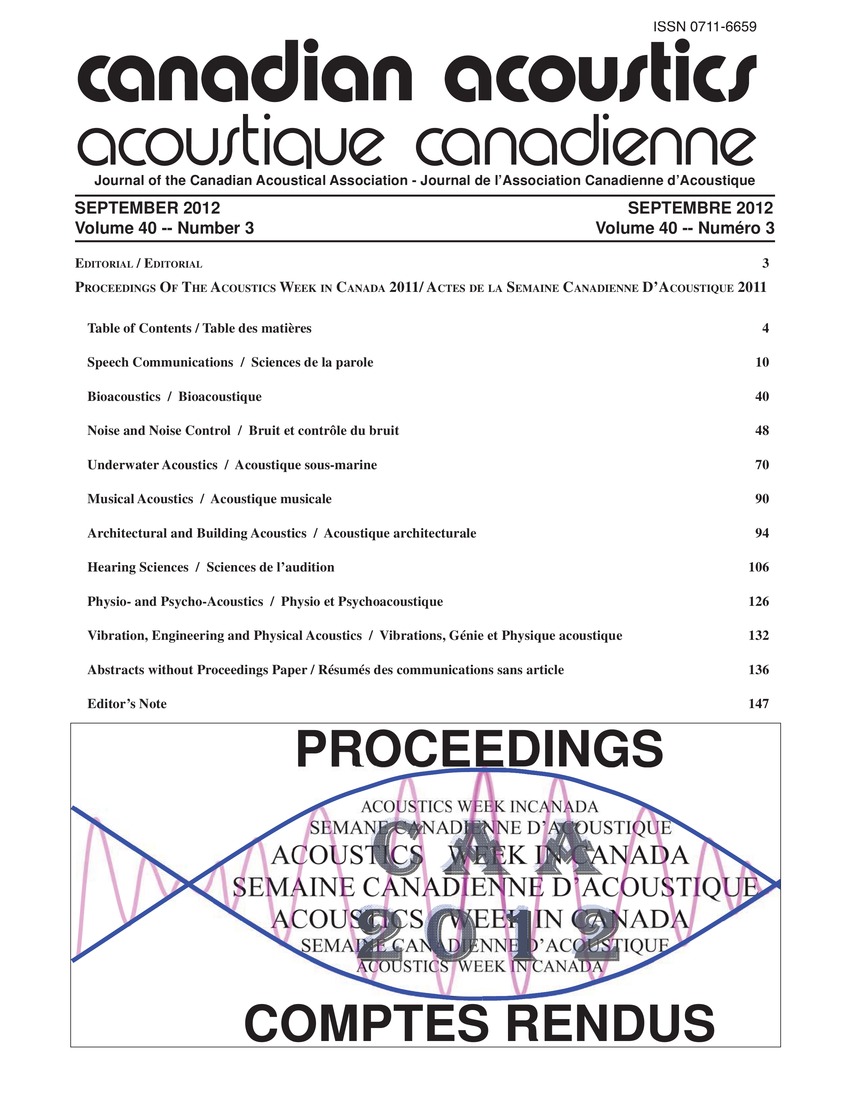Communication headset use and noise measurement in the workplace
Keywords:
Architectural acoustics, Communication, Microphones, Noise pollution, Noise pollution control, Probes, Direct measurement, Ear canal, Human head, Noise exposure, Noise measurements, Sound exposureAbstract
The ISO 11904 describes two procedures for the direct measurement of sound under communication headsets. For the Microphone in a Real Ear (MIRE) technique, a specially trained individual must insert a miniature or probe microphone in the worker's ear canal. Although this technique provides the most direct estimate of sound exposure to the worker, its invasive nature could restrict his/her movement, and the positioning of the microphone or probe can be problematic. The ISO 11904-2 [6] specifies sound measurements on an acoustic manikin. The standardized manikin simulates the changes that happen to sound waves as they pass a human head and torso. An indirect calculation method has also been proposed that can serve as a basic tool to predict noise exposure in workplace settings where communication headsets are worn.Additional Files
Published
How to Cite
Issue
Section
License
Author Licensing Addendum
This Licensing Addendum ("Addendum") is entered into between the undersigned Author(s) and Canadian Acoustics journal published by the Canadian Acoustical Association (hereinafter referred to as the "Publisher"). The Author(s) and the Publisher agree as follows:
-
Retained Rights: The Author(s) retain(s) the following rights:
- The right to reproduce, distribute, and publicly display the Work on the Author's personal website or the website of the Author's institution.
- The right to use the Work in the Author's teaching activities and presentations.
- The right to include the Work in a compilation for the Author's personal use, not for sale.
-
Grant of License: The Author(s) grant(s) to the Publisher a worldwide exclusive license to publish, reproduce, distribute, and display the Work in Canadian Acoustics and any other formats and media deemed appropriate by the Publisher.
-
Attribution: The Publisher agrees to include proper attribution to the Author(s) in all publications and reproductions of the Work.
-
No Conflict: This Addendum is intended to be in harmony with, and not in conflict with, the terms and conditions of the original agreement entered into between the Author(s) and the Publisher.
-
Copyright Clause: Copyright on articles is held by the Author(s). The corresponding Author has the right to grant on behalf of all Authors and does grant on behalf of all Authors, a worldwide exclusive license to the Publisher and its licensees in perpetuity, in all forms, formats, and media (whether known now or created in the future), including but not limited to the rights to publish, reproduce, distribute, display, store, translate, create adaptations, reprints, include within collections, and create summaries, extracts, and/or abstracts of the Contribution.


